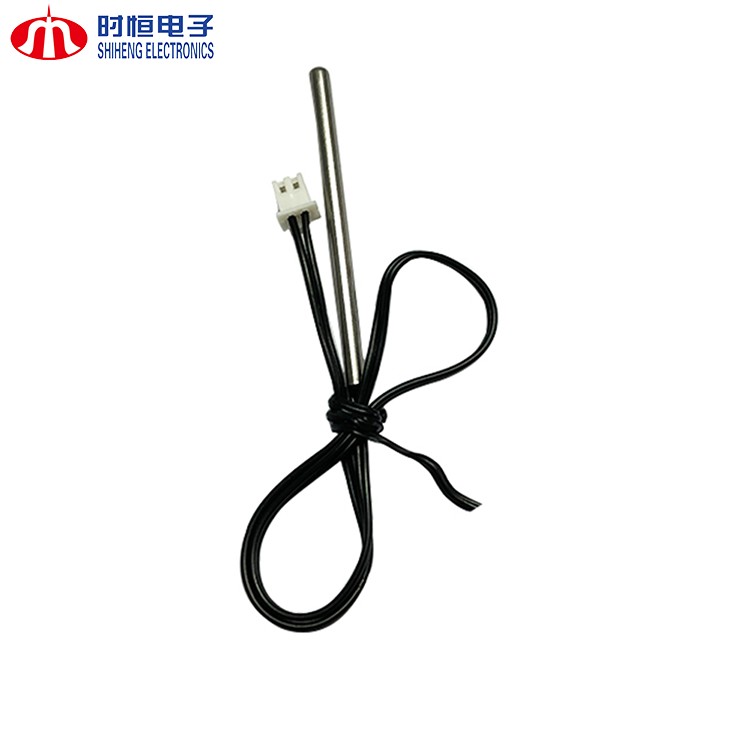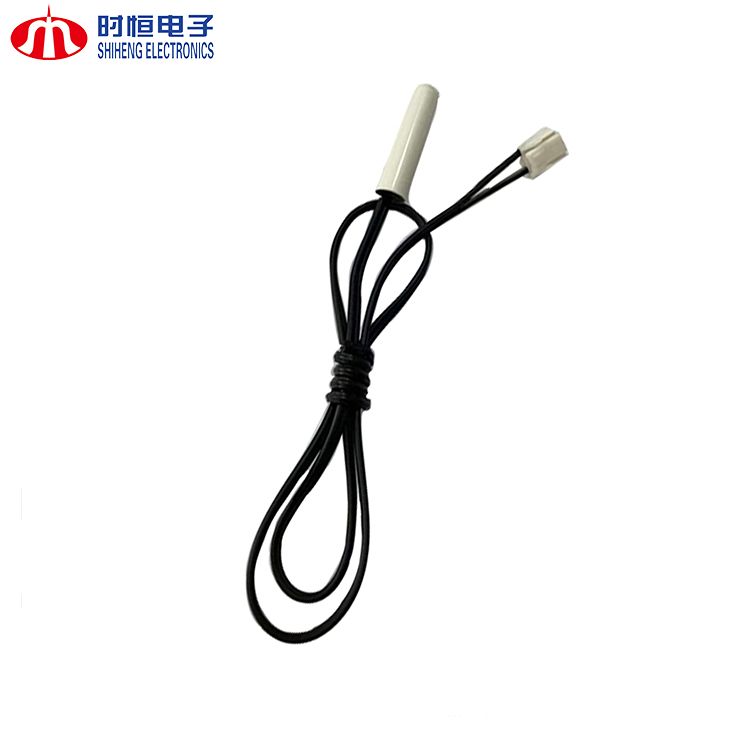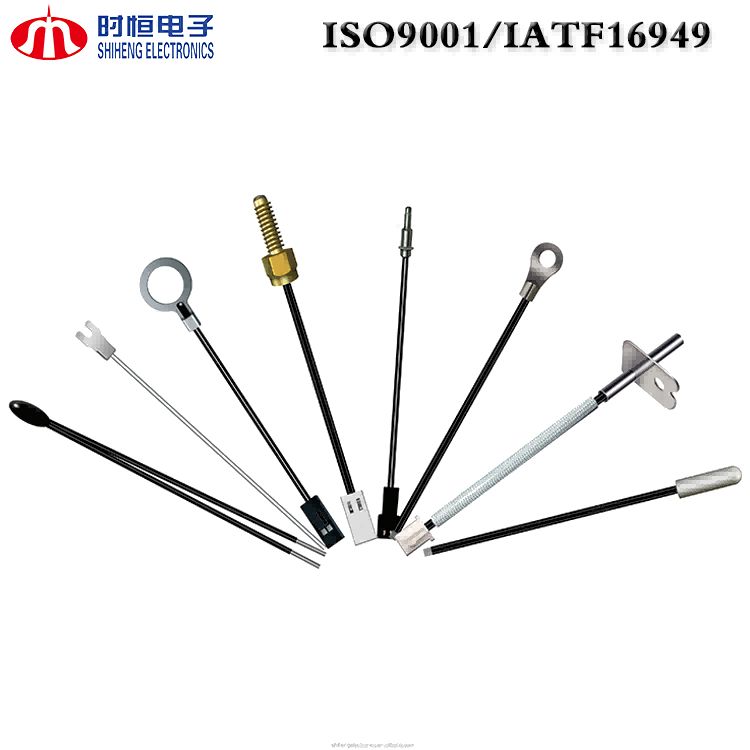What are the Causes of NTC Temperature Sensor Damage?
Mar 15, 2024NTC (Negative Temperature Coefficient) temperature sensors are widely used for temperature measurement and control due to their high sensitivity, fast response, and cost-effectiveness. However, like any electronic component, they can be damaged under certain conditions. Understanding the causes of damage can help in preventing failures and extending the lifespan of these sensors. Below, we explore the common causes of NTC temperature sensor damage, along with some technical insights and preventive measures.
1. Overcurrent and Overheating
- Cause: NTC sensors operate based on the principle that their resistance decreases as temperature increases. When exposed to excessive current, the sensor's temperature rises rapidly, causing its resistance to drop further. This creates a positive feedback loop, where the decreasing resistance leads to even higher current flow, resulting in thermal runaway.
- Result: This can cause weld melting, wire melting, electrode diffusion, or even burning, leading to irreversible damage.
- Symptoms: The sensor may show higher resistance (due to internal damage) or crack directly.
- Prevention: Use current-limiting resistors or protective circuits to prevent excessive current flow. Ensure the sensor operates within its specified power rating.
2. Environmental Factors: Temperature and Humidity
- Cause: NTC sensors are sensitive to environmental conditions. If the temperature and humidity exceed the sensor's operating range, the resistance may decrease abnormally, leading to corrosion or mold growth. For metal-cased sensors, moisture can cause rusting or oxidation.
- Result: This can lead to poor contact, short circuits, or degradation of the sensor's performance.
- Symptoms: The sensor may exhibit erratic readings, drift in resistance values, or complete failure.
- Prevention: Choose sensors with appropriate encapsulation materials (e.g., epoxy resin, stainless steel) for harsh environments. Ensure proper sealing and protection against moisture.

3. Mechanical Stress and Physical Damage
- Cause: During installation or use, excessive mechanical stress (e.g., bending, pulling, or impact) can damage the sensor's structure. This is especially common in sensors with thin wires or fragile encapsulation.
- Result: This can cause cracks in the sensor body, broken wires, or disconnected terminals.
- Symptoms: The sensor may show open-circuit behavior or inconsistent readings.
- Prevention: Handle sensors carefully during installation. Use sensors with robust designs (e.g., stainless steel casing) for applications with high mechanical stress.
4. Manufacturing Defects
- Cause: If the NTC sensor has manufacturing defects, such as poor welding, improper encapsulation, or low-quality materials, it may not withstand normal operating conditions.
- Result: The sensor may fail prematurely under normal use.
- Symptoms: The sensor may exhibit higher resistance, cracking, or inconsistent performance.
- Prevention: Source sensors from reputable manufacturers with strict quality control processes. Inspect sensors before installation.

5. Thermal Shock
- Cause: Rapid temperature changes (thermal shock) can cause internal stress in the sensor's materials, leading to cracking or delamination.
- Result: The sensor may lose its accuracy or fail completely.
- Symptoms: The sensor may show sudden changes in resistance or physical damage.
- Prevention: Use sensors designed for rapid temperature changes and avoid exposing them to extreme thermal gradients.
6. Chemical Exposure
- Cause: Exposure to corrosive chemicals (e.g., acids, solvents) can degrade the sensor's materials, especially if it lacks proper encapsulation.
- Result: This can cause corrosion, material breakdown, or loss of electrical contact.
- Symptoms: The sensor may exhibit erratic readings or complete failure.
- Prevention: Use sensors with chemical-resistant encapsulation (e.g., PTFE, stainless steel) for harsh chemical environments.
7. Electrical Overstress (EOS)
- Cause: Electrical overstress occurs when the sensor is exposed to voltage or current levels beyond its rated specifications, often due to power surges or improper circuit design.
- Result: This can cause internal damage to the sensor's materials, leading to failure.
- Symptoms: The sensor may show higher resistance, open-circuit behavior, or physical damage.
- Prevention: Use protective circuits (e.g., fuses, transient voltage suppressors) to safeguard against electrical overstress.
Technical Insights: How NTC Sensors Work
NTC sensors are made from semiconductor materials (e.g., metal oxides like manganese, nickel, and cobalt) that exhibit a negative temperature coefficient. As temperature increases, the number of charge carriers (electrons and holes) in the material increases, causing the resistance to decrease. This relationship is described by the Steinhart-Hart equation:
1/T =A+B · In(R)+C ·(In(R))3
Where:
- (T) = Temperature in Kelvin
- (R)= Resistance at temperature T
- (A, B, C) = Material-specific constants
This nonlinear relationship allows NTC sensors to provide highly accurate temperature measurements over a wide range.

Preventive Measures and Best Practices
1. Operate Within Specifications: Always use the sensor within its rated temperature, current, and voltage ranges.
2. Choose the Right Encapsulation: Select sensors with appropriate encapsulation materials (e.g., epoxy, stainless steel) for your application's environment.
3. Implement Protective Circuits: Use current-limiting resistors, fuses, or transient voltage suppressors to protect against overcurrent and electrical overstress.
4. Handle with Care: Avoid mechanical stress during installation and use.
5. Regular Maintenance: Inspect sensors periodically for signs of damage or degradation.